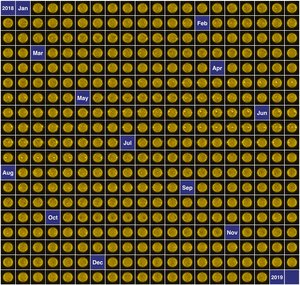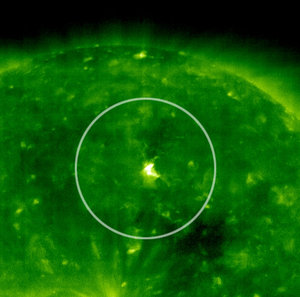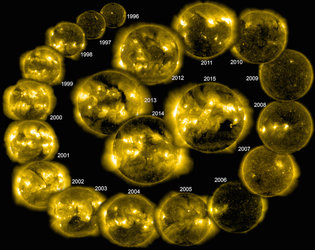Accept all cookies Accept only essential cookies See our Cookie Notice

About ESA
The European Space Agency (ESA) is Europe’s gateway to space. Its mission is to shape the development of Europe’s space capability and ensure that investment in space continues to deliver benefits to the citizens of Europe and the world.
Highlights
ESA - United space in Europe
This is ESA ESA facts Member States & Cooperating States Funding Director General Top management For Member State Delegations European vision European Space Policy ESA & EU Space Councils Responsibility & Sustainability Annual Report Calendar of meetings Corporate newsEstablishments & sites
ESA Headquarters ESA ESTEC ESA ESOC ESA ESRIN ESA EAC ESA ESAC Europe's Spaceport ESA ESEC ESA ECSAT Brussels Office Washington OfficeWorking with ESA
Business with ESA ESA Commercialisation Gateway Law at ESA Careers Cyber resilience at ESA IT at ESA Newsroom Partnerships Merchandising Licence Education Open Space Innovation Platform Integrity and Reporting Administrative Tribunal Health and SafetyMore about ESA
History ESA Historical Archives Exhibitions Publications Art & Culture ESA Merchandise Kids Diversity ESA Brand Centre ESA ChampionsSpace in Member States
Find out more about space activities in our 23 Member States, and understand how ESA works together with their national agencies, institutions and organisations.
Science & Exploration
Exploring our Solar System and unlocking the secrets of the Universe
Go to topicAstronauts
Missions
Juice Euclid Webb Solar Orbiter BepiColombo Gaia ExoMars Cheops Exoplanet missions More missionsActivities
International Space Station Orion service module Gateway Concordia Caves & Pangaea BenefitsLatest
Space Safety
Protecting life and infrastructure on Earth and in orbit
Go to topicAsteroids
Asteroids and Planetary Defence Asteroid danger explained Flyeye telescope: asteroid detection Hera mission: asteroid deflection Near-Earth Object Coordination CentreSpace junk
About space debris Space debris by the numbers Space Environment Report In space refuelling, refurbishing and removingSafety from space
Clean Space ecodesign Zero Debris Technologies Space for Earth Supporting Sustainable DevelopmentLatest
Applications
Using space to benefit citizens and meet future challenges on Earth
Go to topicObserving the Earth
Observing the Earth Future EO Copernicus Meteorology Space for our climate Satellite missionsCommercialisation
ESA Commercialisation Gateway Open Space Innovation Platform Business Incubation ESA Space SolutionsEnabling & Support
Making space accessible and developing the technologies for the future
Go to topicBuilding missions
Space Engineering and Technology Test centre Laboratories Concurrent Design Facility Preparing for the future Shaping the Future Discovery and Preparation Advanced Concepts TeamSpace transportation
Space Transportation Ariane Vega Space Rider Future space transportation Boost! Europe's Spaceport Launches from Europe's Spaceport from 2012Latest

Necklaces of solar activity
Thank you for liking
You have already liked this page, you can only like it once!
Back in 1998, the Sun was behaving as expected. The approximately 11-year cycle of activity was proceeding smoothly, heading towards a peak in 2001.
The Solar and Heliospheric Observatory (SOHO) captured this image on 9 November 1998 through its ultraviolet telescope, showing radiation from iron atoms bathed in a gas of around a million degrees Celsius.
This textbook image of solar activity shows two brighter bands circling the Sun at the same latitude in each hemisphere.
At visible wavelengths these bright loops and patches are associated with dark smudges known as sunspots. They are produced when loops of magnetism become buoyant and rise from inside the Sun into the atmosphere.
When the cycle begins, the active regions appear at high latitudes in sparse numbers, disappearing after a few weeks or so. As the cycle proceeds, new and often larger active regions appear more frequently at successively lower latitudes. Many can be larger than Earth, and they sometimes persist for months.
This activity takes place in both hemispheres simultaneously, and about five or six years into the cycle sunspots reach lower latitudes closer to the equator. This is known as solar maximum.
After this, the number of spots begins to decline until they virtually disappear and the cycle starts again at high latitudes. It is one of the enduring mysteries of the Sun why this cycle happens. Certainly, it is linked to the way the Sun generates magnetism deep inside its gaseous layers but the details remain elusive.
In recent years, the Sun has deviated from this textbook behaviour. The current cycle was about two years late in starting, the hemispheres are behaving differently and the peak of activity is relatively modest. The next cycle is expected to continue in this new vein. It may even be weaker than the current cycle.
-
CREDIT
SOHO (ESA & NASA) -
LICENCE
ESA Standard Licence

22 years of SOHO

Solar cycle

The Sun in 2018

Two solar blasts mark the start of new solar cycle















 Germany
Germany
 Austria
Austria
 Belgium
Belgium
 Denmark
Denmark
 Spain
Spain
 Estonia
Estonia
 Finland
Finland
 France
France
 Greece
Greece
 Hungary
Hungary
 Ireland
Ireland
 Italy
Italy
 Luxembourg
Luxembourg
 Norway
Norway
 The Netherlands
The Netherlands
 Poland
Poland
 Portugal
Portugal
 Czechia
Czechia
 Romania
Romania
 United Kingdom
United Kingdom
 Slovenia
Slovenia
 Sweden
Sweden
 Switzerland
Switzerland

























